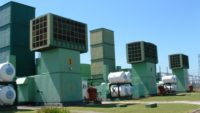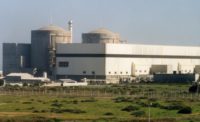A joint venture of Italian firms CMC di Revenna and Impregilo s.p.a and South Africa’s PG Mavundla has completed the first of the four units of South Africa’s $3.5-billion Ingula Pumped Storage program. The South African government is hopeful that the project will stabilize the region’s energy supply, which has experienced frequent load shedding.
State-owned power utility Eskom synchronized the 333-MW Unit 3 to the grid on March 6. The unit is set to be commercially operational in January 2017.
The Ingula Pumped Storage scheme is a 1,332-MW project that is meant to supply power during periods of peak demand and insufficient supply but also offers capacity to store energy from the system during periods of low demand or excess capacity.
“This is a key milestone toward the full commercial operation of the unit ahead of the scheduled deadline of January 2017,” Eskom said in a March 11 statement.
The program depends upon two dams. The upper dam—called the Bedford dam and located on the Wilge River—is a concrete-face rockfill dam, with capacity of 22,400,000 cu meters. Eskom will use 19,200,000 cu m of the water to generate electricity.
The second dam, called the Bramhoek dam, is a roller-compacted concrete gravity dam, with capacity of 26,300,000 cu m. At least 21,900,000 cu m will be pumped to the upper dam.
To generate electricity, water is released to the lower dam from the upper dam, passing through an underground power station with four reversible Francis pump turbines, each with a capacity of 333MW. During times of low energy demand, the pump turbines are used to pump the water from the lower dam back to the upper dam.
Eskom on March 11 stated that, when all four units are in operation, the upper reservoir's stored hydro energy will provide approximately 16 hours of peak generation.
Noting that testing has started in preparation for Unit 4's synchronization, the power utility continued, "The major construction work on both Unit 2 and Unit 1 has also been completed, and work on the outstanding electrical cabling and pipework is being accelerated.”
Eskom’s Group Chief Executive Brian Molefe on March 11 said the four units will be completed in five years and “will increase our generation capacity by 17,384 megawatts, transmission lines by 9,756 kilometers and substation capacity by 42,470-million volt-amperes.”
He also observed, “This will enable us to provide security of electricity supply to South African homes and businesses, powering economic expansion and extending electricity to millions of households who currently rely on other fuel sources for domestic cooking and heating.”



